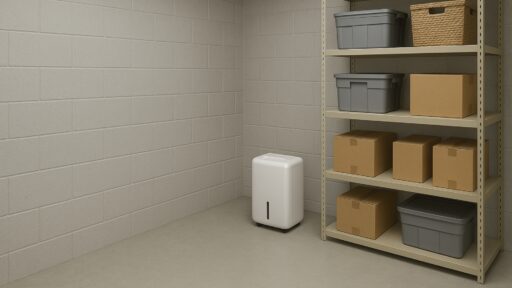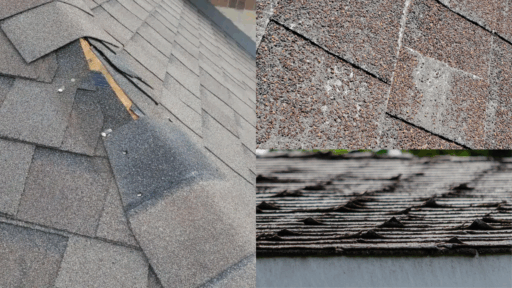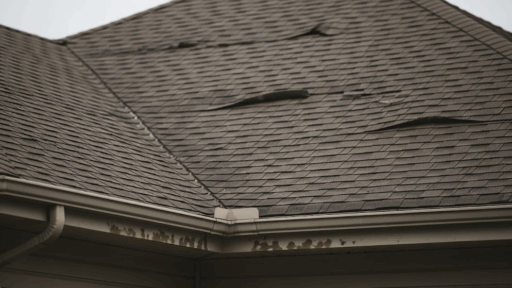Wondering if your roof is ready for retirement or still has years of protection left for your home?
Determining the age of my roof becomes crucial when I plan my budget or prepare to sell my house.
Warning signs, such as curling shingles, granules in the gutters, or mysterious leaks, indicate it’s time to investigate the true age of my roof.
I’ll share proven methods to find when my roof was installed, from checking city records to spotting visual clues that reveal age.
Additionally, I’ll explain what to do once I know the age of my roof, whether it requires simple maintenance or comprehensive replacement planning.
Understanding my roof’s timeline helps me make smart decisions and avoid costly emergency repairs that could drain my savings.
Why Roof Age Matters
I learned the hard way that knowing my roof’s age affects almost every aspect of homeownership.
My insurance company raised my rates significantly when they found that my 20-year-old shingles were nearing the end of their lifespan.
Some insurers even refuse coverage for roofs over 15 years old, which shocked me completely.
When I started budgeting for replacement, I wished I had planned earlier, since costs are huge.
Older roofs also pose safety risks from loose shingles or structural damage that could harm families.
Plus, when I sell my home, buyers will ask about the roof’s condition and age.
I’ve also noticed that my energy bills are creeping up as my aging roof loses its insulation effectiveness.
How to Determine Your Roof’s Age
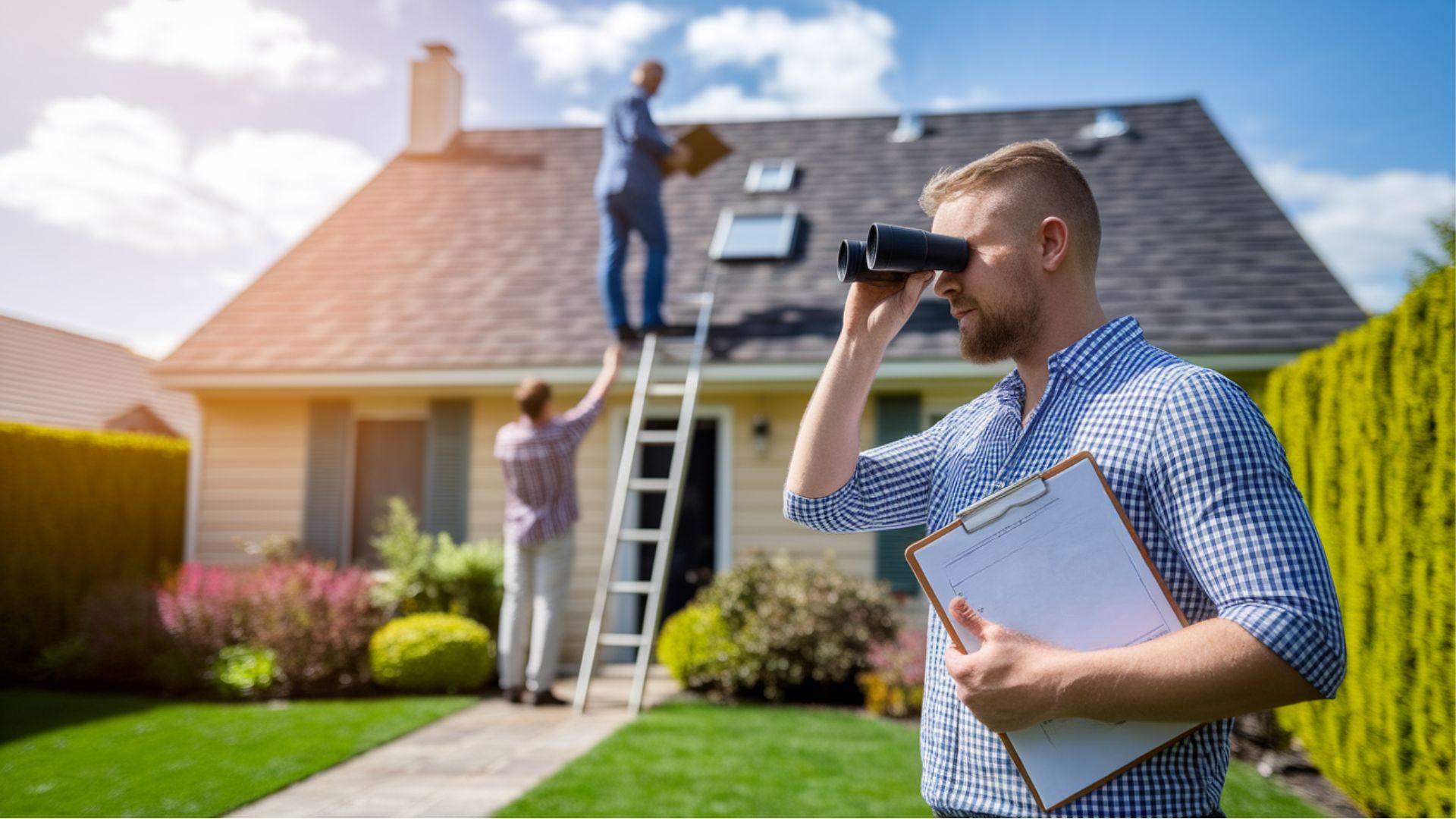
Finding out your roof’s age doesn’t have to be a mystery or expensive detective work.
I’ve used several methods over the years, and some work better than others depending on your situation.
Here are six proven ways to find out when your roof was installed.
1. Check Building Permits and City Records
I start by calling my city’s building department or checking their online portal for permits.
Most roof replacements require permits, so there’s usually a paper trail with exact installation dates.
The records show contractor names, materials used, and inspection dates, which gives me a complete roof history.
2. Review Home Purchase Documents and Inspections
I review my home purchase paperwork, as previous inspections often mention the roof’s age and condition.
Real estate disclosures sometimes include roofing work dates, and my home warranty papers list roof details.
These documents saved me hours of detective work when I needed proof of roof age.
3. Ask Previous Homeowners or Neighbors
I contact previous owners through my real estate agent or ask longtime neighbors about roofing work.
Neighbors often recall when major roofing projects occurred due to the noise and disruption they caused.
This method works especially well in close-knit communities where residents take pride in their homes.
4. Contact the Original Roofing Contractor
I look for roofing company stickers on my electrical panel or garage walls from past work.
Many contractors keep detailed records and can provide exact installation dates when I call them.
Some even offer warranties that help me determine when the work was originally completed successfully.
5. Professional Roof Inspection Assessment
I hire a certified inspector who can estimate age based on material wear and installation techniques.
They know how different materials age and can spot clues I’d miss as a homeowner.
Professional assessments cost $300-500 but provide detailed reports that insurance companies and buyers trust completely.
6. Visual Clues and Material Dating Techniques
I examine shingle styles, nail patterns, and material types that indicate different installation eras from various decades.
Older roofs often feature three-tab shingles, whereas newer ones utilize structural styles with improved technology.
I also check for manufacturer stamps or codes on accessible shingles that reveal production dates.
Spotting Signs of an Aging Roof
Looking at my roof from the ground level gives me a lot of clues about its age and condition.
I don’t need to climb up there to spot the telltale signs of an aging roof.
These visual indicators help me understand when it’s time to start planning for replacement.
1. Shingle Appearance and Wear Patterns
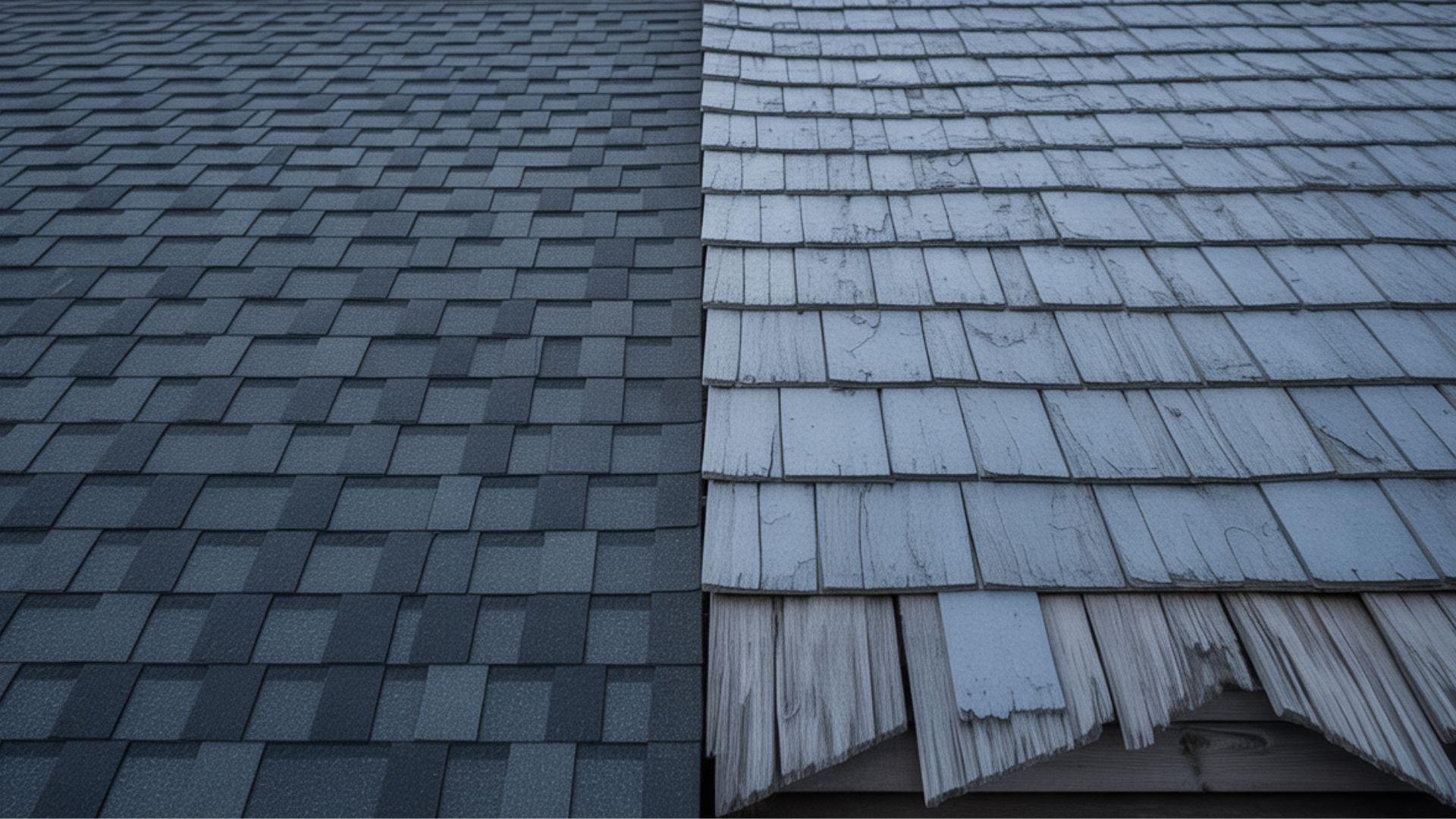
I notice that newer shingles look uniform and flat against the roof surface with clean, sharp edges.
Older shingles develop a weathered, uneven appearance with rounded edges from years of sun and rain exposure.
The overall pattern appears messy, unlike the neat, organized rows I see on recently installed roofs.
2. Granule Loss and Color Fading
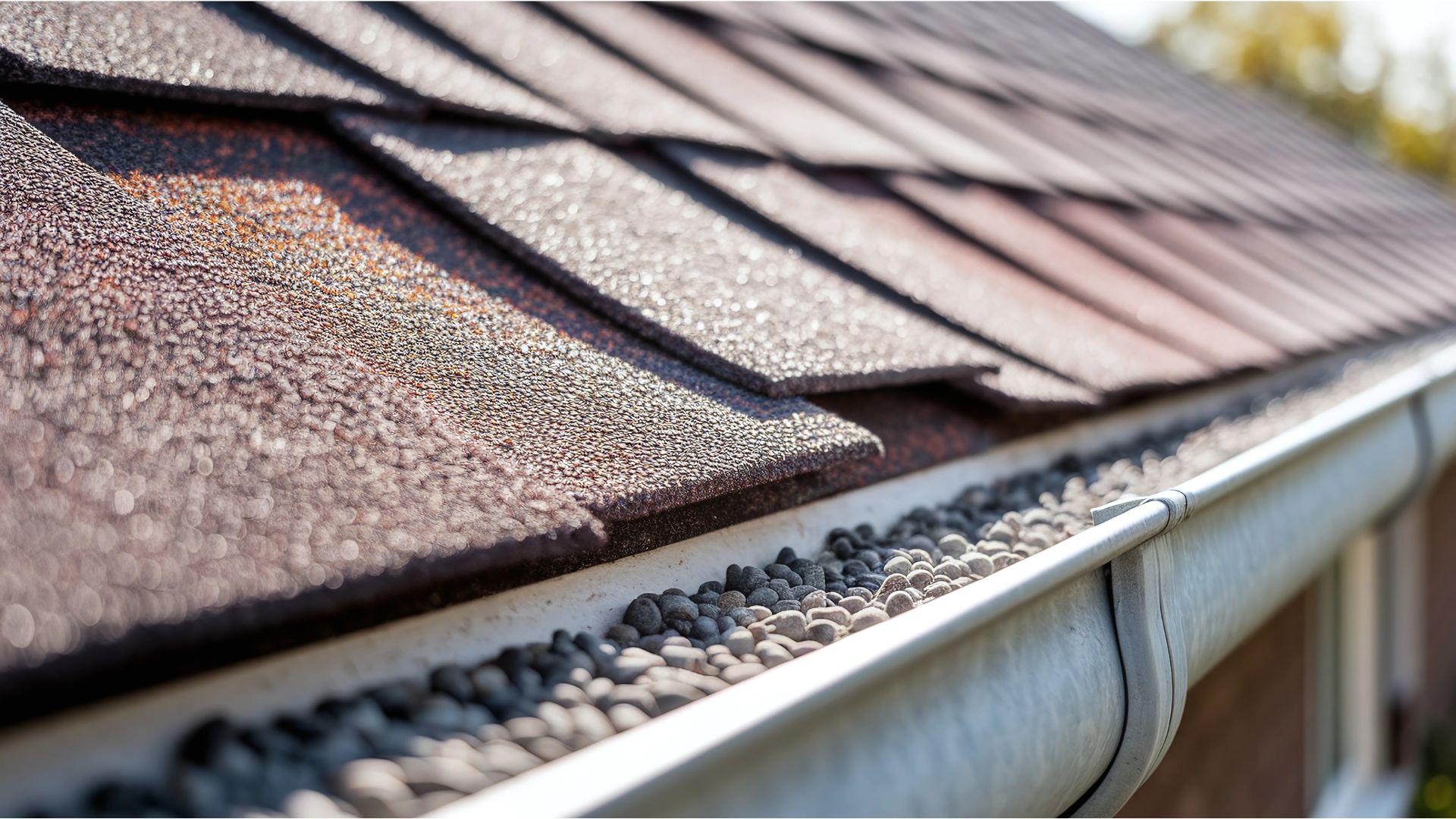
I check my gutters for granules that look like coarse sand washing off my shingles during storms.
Fresh shingles have thick granule coatings that protect them, but old ones lose this protective layer over time.
The colors also fade from their original vibrant shades to dull, washed-out tones that make the roof look tired.
3. Curling, Cracking, or Missing Shingles
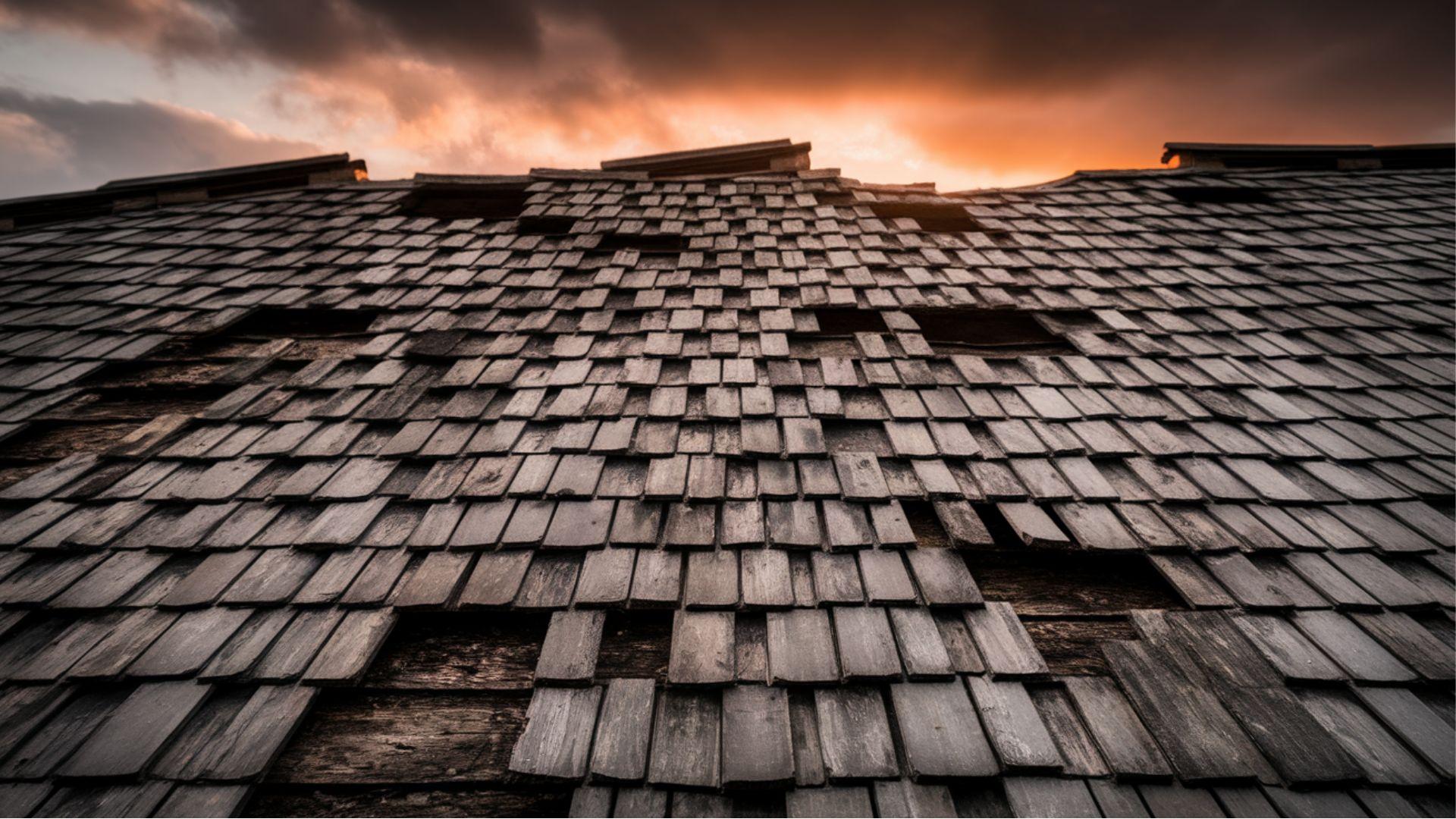
I look for shingles that curl up at the edges or crack down the middle from age.
Missing shingles are obvious red flags that indicate my roof is reaching the end of its useful life.
These problems worsen quickly once they begin, especially during windy storms that can also damage the surrounding shingles.
4. Gutter Condition and Debris Accumulation
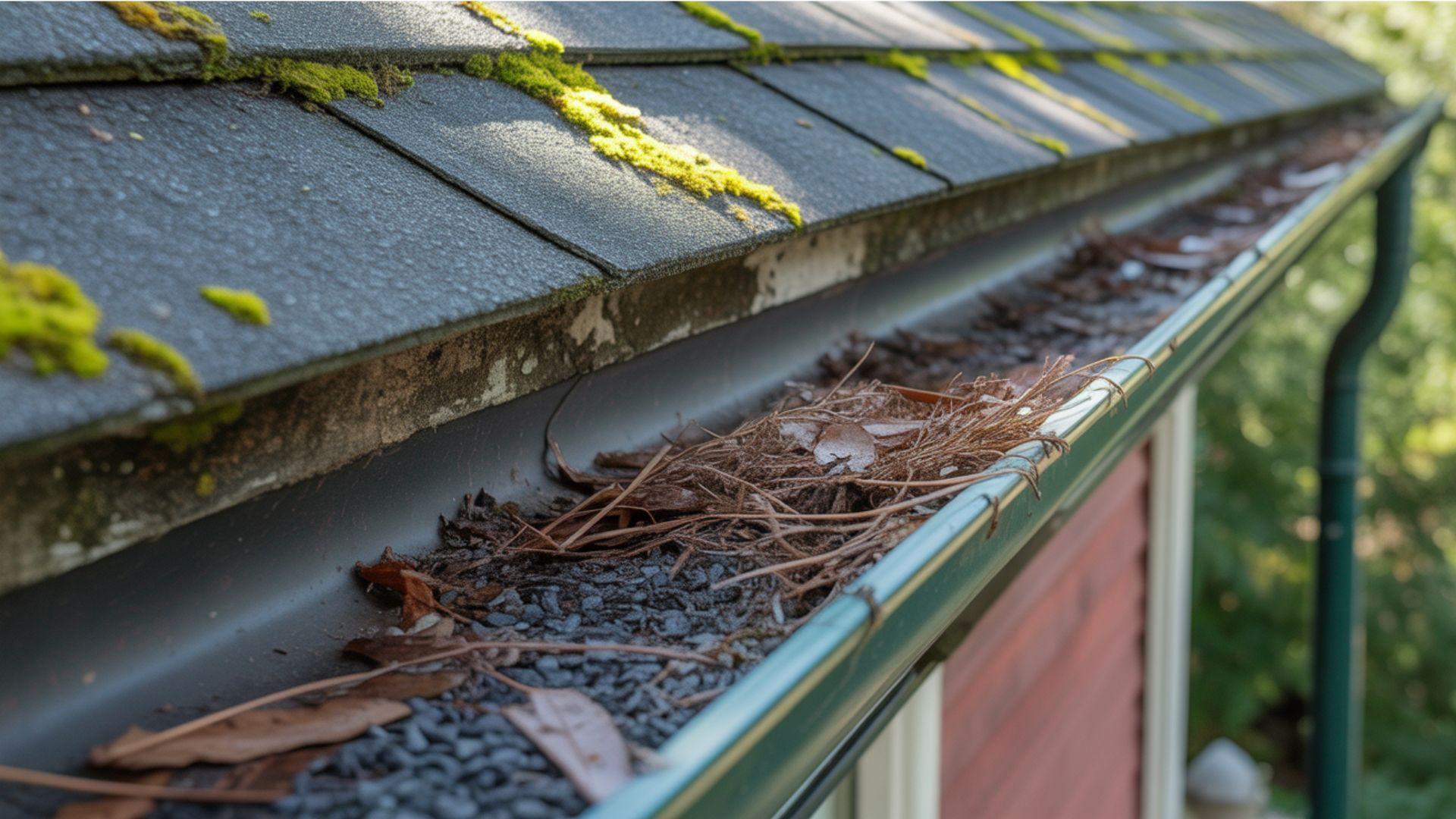
I examine my gutters for excessive granules, broken shingle pieces, and other roofing debris that washes down.
Clean gutters on older homes usually mean the roof is still in decent shape for its age.
The heavy debris accumulation indicates that the roof is deteriorating more rapidly and requires closer attention from professionals soon.
5. Flashing and Sealant Deterioration
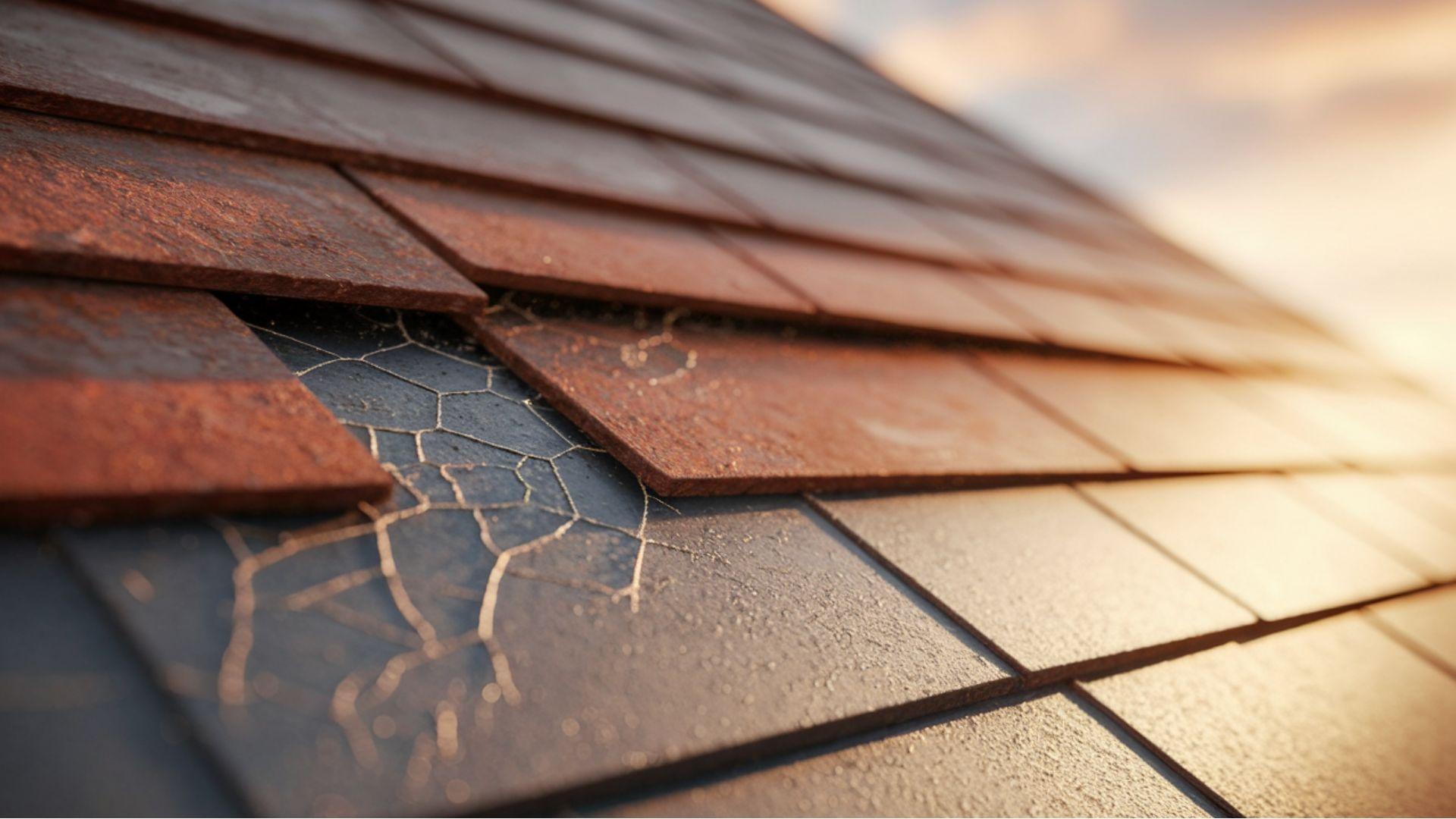
I inspect the metal flashing around chimneys, vents, and roof edges for rust, gaps, or loose sections.
Old sealant cracks and pulls away from joints, creating potential leak points during heavy rain or snow.
These areas often exhibit age-related problems before the main roof surface starts to look noticeably worn and damaged.
Average Lifespan by Roofing Material
Understanding how long different roofing materials last helps me plan for future replacements and budget accordingly.
Each material has its lifespan, which is influenced by its quality, climate, and the level of maintenance it receives over time.
Here’s what I can expect from the most common roofing materials in my area.
| MATERIAL TYPE | EXPECTED LIFESPAN | COST RANGE | BEST FOR |
|---|---|---|---|
| Asphalt Shingles | 15-30 years | Budget-friendly | Most homes, easy replacement |
| Metal Roofing | 40-70 years | Mid to high | Energy efficiency, durability |
| Tile Roofing | 50-100 years | High | Hot climates, Mediterranean style |
| Slate Roofing | 75-150 years | Very high | Historic homes, premium look |
| Wood Shingles | 25-30 years | Mid-range | Natural look, good insulation |
Harsh winters, intense sun, and frequent storms can reduce these timeframes by 20-30 percent in my area.
Regular maintenance, like cleaning gutters and replacing damaged shingles, helps me reach the upper end of these ranges.
I always consider my budget, home style, and long-term plans when choosing materials for my specific situation.
NOTE: These lifespans can vary significantly based on my local weather conditions and maintenance habits.
Action Plan by Roof Age.
Once I know my roof’s age, I can create a smart action plan that saves money and prevents problems.
Different age groups require different approaches, so I adjust my strategy based on the stage of my roof’s lifecycle.
- Young roof (0-10 years): Focus on preventive maintenance by cleaning gutters twice yearly, trimming overhanging branches, and checking for loose or damaged shingles after storms.
- Middle-aged roof (10-20 years): Schedule professional inspections every 2-3 years to catch small problems early and start budgeting for eventual replacement in the coming decade.
- Aging roof (20+ years): Begin serious replacement planning by getting multiple contractor quotes, researching financing options, and prioritizing this major expense in my home budget.
- Emergency signs requiring immediate action include water leaks, sagging areas, missing large sections of shingles, or visible daylight through the roof boards from inside my attic.
I’ve learned that being bold, based on my roof’s age, prevents expensive emergency repairs and gives me control over the timing.
Taking the right action at the right time keeps my family safe and my wallet happy for years to come.
Planning for Roof Replacement
When planning for roof replacement, I need a smart strategy that considers timing, costs, and insurance coverage.
Here’s what I’ve learned works best for getting the job done right without breaking the bank.
- I check the age and condition of my roof first, as older roofs cost more to insure and replace, which affects my budget planning.
- I budget based on roof type and size, knowing that materials like metal or slate cost more upfront but last longer.
- I schedule replacement during spring or fall when the weather is mild and contractors aren’t busy, saving money and time.
- I choose roofers experienced with insurance claims so they handle inspections and paperwork if my policy covers storm damage.
Taking these steps in order helps me avoid costly mistakes and ensures I get the best value.
Planning ahead gives me control over the process, rather than scrambling during an emergency repair situation.
Final Words
Determining the age of my roof has become one of my most important homeowner skills for protecting my family and finances.
Knowing my roof’s age helps me plan budgets and make informed decisions about when to repair versus replace it effectively.
I’ve learned that being proactive based on my roof’s age prevents expensive emergency situations and gives me control over major expenses.
Regular inspections and maintenance ensure my roof performs well throughout its expected lifespan, providing maximum protection.
Don’t wait until problems appear to start investigating your roof’s age and current condition right away.
Share your roof age finding stories in the comments and help other homeowners learn from your experiences today!
If you’re interested in more home maintenance content, click here to explore other blogs that may interest you.






